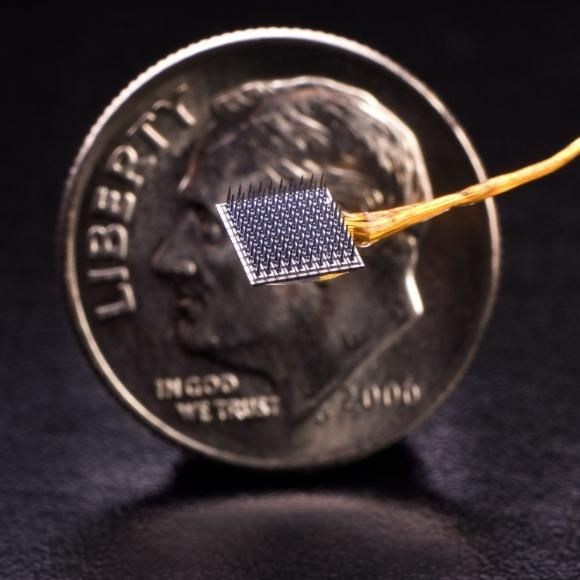Mind Control: Brain Implants Allow People With ALS To Communicate With Their Thoughts

In a world where we have brain-to-brain connections, it was only a matter of time before scientists allowed us to use our brain to control our devices. A team of researchers with ties to BrainGate — an organization comprised of neuroscientists, engineers, computer scientists, and mathematicians — has published a study in Nature Medicine that shows two participants using a neural prosthesis called BrainGate2 to control a cursor on a screen more accurately than ever previously allowed.
Previous versions of the system allowed the user to lift a mug to their lips with a robotic arm or play simple games using just their mind. This latest version allows for much greater and much more accurate use, with one participant being able to type six words per minute using a system that previously allowed people to type with their eyes.
BrainGate created the system to help people who've lost control of their limbs; the two participants in this study both suffered from amyotrophic lateral sclerosis (ALS), a progressive neuromuscular disease that destroys the motor nerve cells in the brain and spinal cord. A year before the tests began, a 4-millimeter "neural recording device" was surgically implanted onto the part of the brain that controlled both participants' hand functions. The sensor takes impulses sent from the brain and creates a signal that translates into movement of the on-screen cursor.
The researchers had the participants perform a variety of tasks, like moving the cursor to random areas on the screen. Using an updated algorithm, the researchers were able to reduce the time lag between the participants' thoughts about moving the cursor and the actual movement of the cursor. After using an outdated version of the same software that featured heavy lag, one of the participants told lead author and Stanford neurosurgeon Jaimie Henderson, the movement of the cursor became “much more natural and much more intuitive.”
According to researchers, both subjects had a much easier time using the new software, getting around tasks in half the time it took other participants. "Both of the participants found the system relatively easy to use," Henderson said.
Although these experiments focused on controlling a cursor on a screen, Henderson said the team is aiming its sights higher. The team will eventually use the software to develop robotic limbs and find ways to move muscles with the brain.
Source: Henderson, J, et al. Clinical translation of a high-performance neural prosthesis. Nature Medicine. 2015.



























